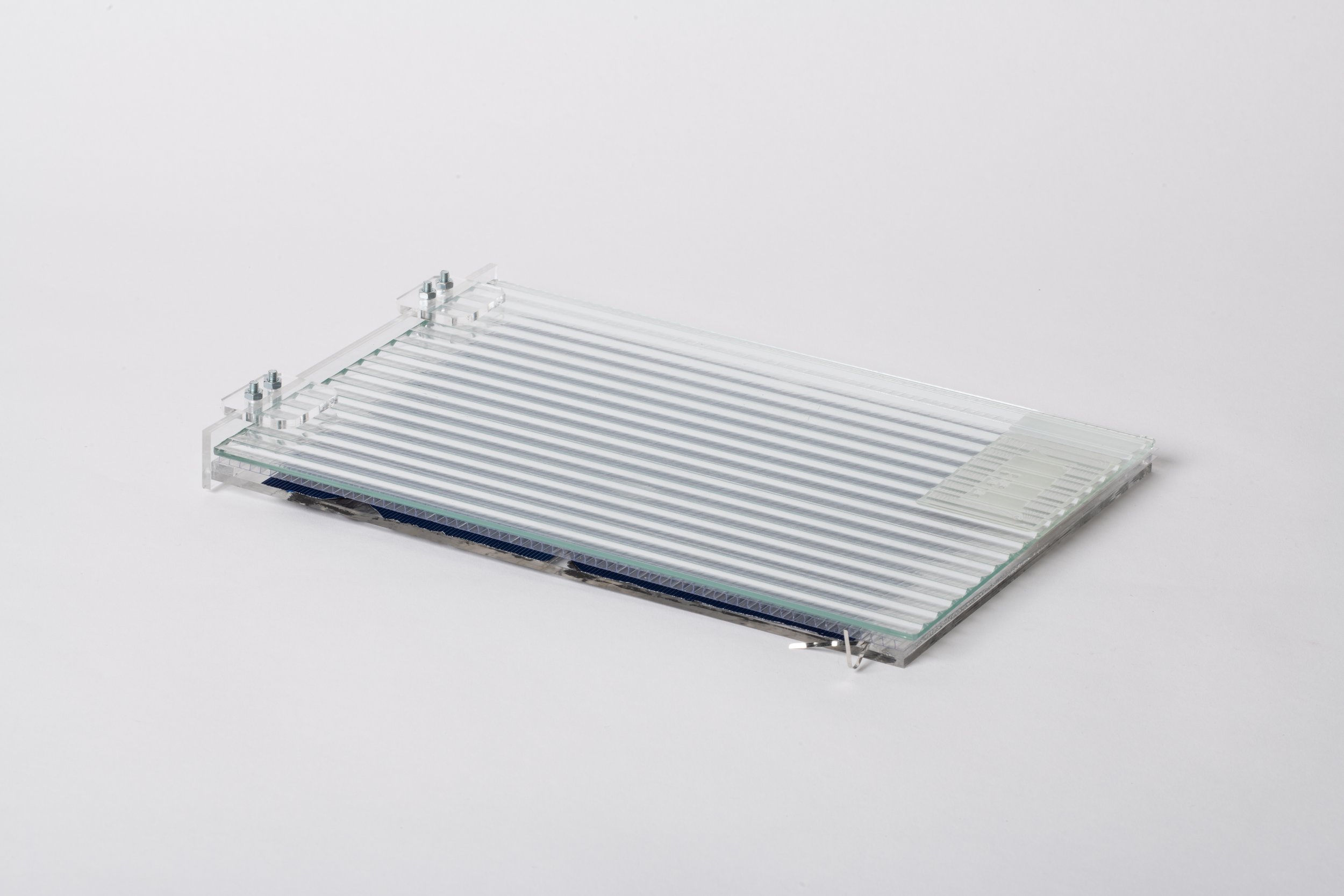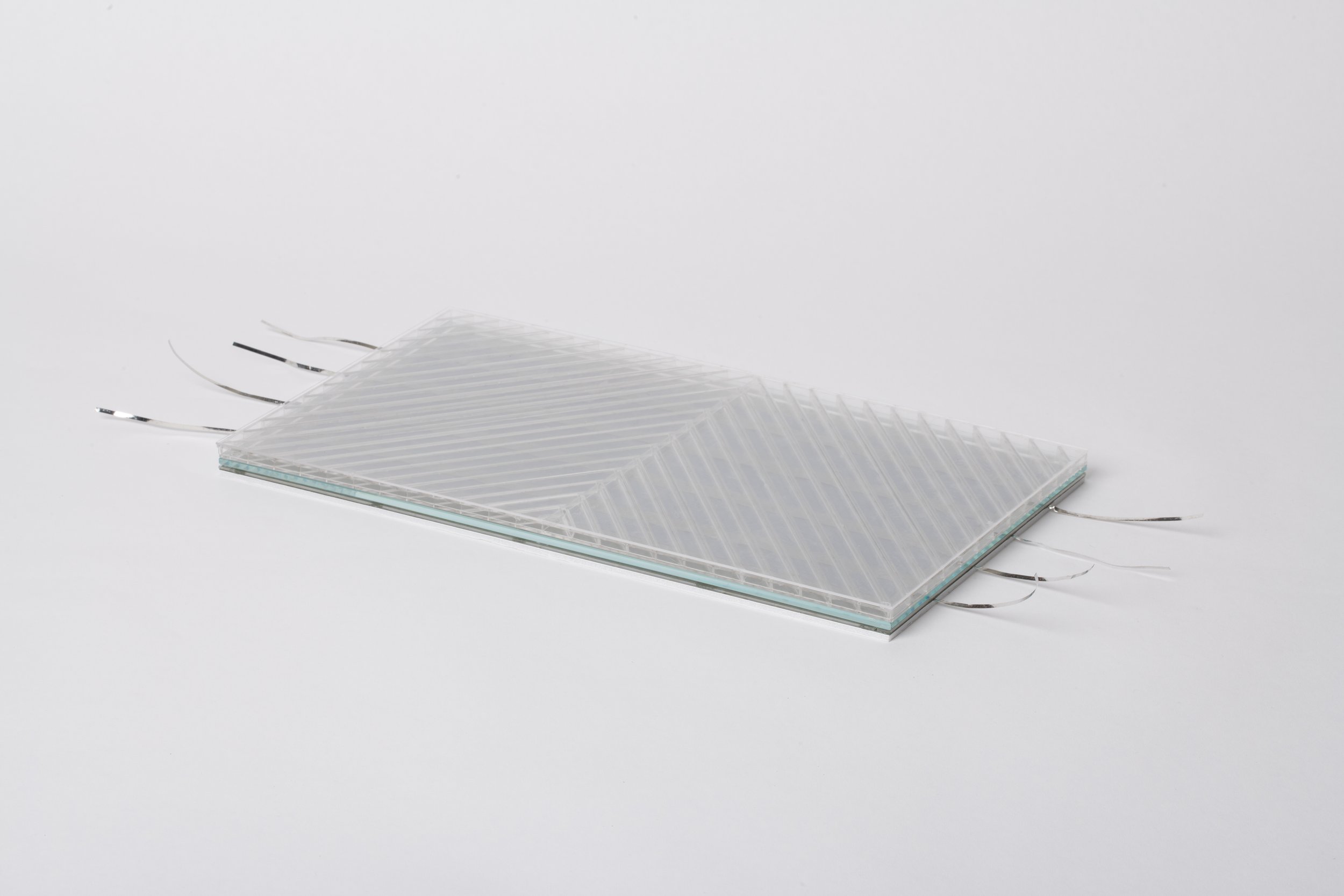BIPV Workshop (2021)
The Building Integrated Photovoltaics (BIPV) Workshop is a hands-on exploratory workshop focused on the potential of building integrated photovoltaics (BIPV).
Over the course of the week, each participant becomes familiar with the material components of a photovoltaic module, as well as simple tools to test and evaluate their performance.
Additionally, in teams of two, participants fabricate prototypes, scale up their design modules graphically and apply them to building volumes.
By the end of the week, each participant gaines 1) hands-on experience in fabricating a PV module, 2) a broader understanding of PV design strategies, as well as 3) a deeper understanding of the potential for BIPV on building expression.
SPEAKERS
Prof. Dr. Maria Cristina Munari Probst is a lecturer at EPFL and a Professor at HEIA-FR. She is focused on topics of architectural integration of solar energy and is co-author of the book - Architectural Integration and Design of Solar Thermal Systems.
Prof. Dr. Christophe Ballif is the director of the EPFL PV and Thin Film Electronics Lab and is an executive board member of CESM, which is a private non-profit focused on research, tech development, and transfer to industry.
Andreas Haller is currently Head of Innovation and Development of the solar energy division of Ernst Schweizer AG and has been active in the Swiss R&D sector for over 25 years.
The results of our first BIPV Workshop 2021 were shown in the exhibition “Design with Solar Materials” at the Materials Hub at ETH Zurich.
Images copyright: ETH Material Hub.
The Shard
Team 1: Roc-Andrea Rüegg & Jonas Hiller
The leading concept for this solar module is the upcycling of broken solar cells, which are scanned and rearranged to create new, unique compositions that can vary in density and transparency. Electric connection and placement of the cells can be computationally optimized to maximize the energy output.
Porous PV
Team 2: Josien De Koning & Lucas Lamberti
This semi-transparent solar module contains 5 reflective cones that concentrate the sunlight onto smaller, highly efficient multi-junction round solar cells. The backside of the round solar cells is colored, creating a playful visual composition if seen from the inside of a building. Such a module could be embedded into large windows and glass facades for energy generation, shading, privacy protection, and visual effects. Various patterns are possible.
Folding Solar Curtain
Team 3: Anna Menasce & Manuel Lorz
This module is a flexible element that can be installed on building facades as an electronically controlled, foldable curtain. It is highly adaptable in terms of color, appearance, and size according to the client’s needs and preferences. The transparent foil and the reduced size of the solar cells create an ornamental geometric shadow while filtering the light inside the building.
Grid Overlay
Team 4: Leandro Nahuel Barroso & Ralf Zwahlen
This solar module is composed of colored polycrystalline solar cells covered by an additional layer of ornamental glass that conveys to building facades an elegant and iridescent texture. This module has been conceived for disassembly, as the cells are not soldered into an adhesive sheet but are mounted directly on the back sheet.
Autumn Stripes
Team 5: Ilona Korándi Németh & Dimitri Durst
Autumn Stripes is a solar module with three colored polycrystalline solar stripes that change tonality depending on the light angle. The simple square format offers multiple design opportunities. The frosted glass cover protects the cells and adds an opaque finishing.
Green Tile Pattern
Team 6: Maximilian Mittelstaedt & Nora Heeb
Solar cells are hidden between green back sheets and are covered by a striped glass cover. This prototype is half the size of a standard module, which allows for more adaptability to a variety of facade implications.
Milky
Team 7: Natalia Kobylinska & Samuel Kummer
In this solar module, a string of solar cells is concealed under a semi-translucent, three-dimensional wavy front cover, with the goal of dissimulating the modularity and the high-tech appearance of solar cells. The module is suitable for large-scale buildings as a full continuous aesthetic facade.
Moving Module
Team 8: Lisa Stricker & Nikola Endres
The monocrystalline solar cell is cut into ten rectangular pieces. They are encapsulated in protective ETFE layers that are laminated just at the edges. Inductance coils transmit the current so that no openings in the module are required. When put together, this solar stripe can work as an adaptable curtain that provides shade while producing electricity.

















